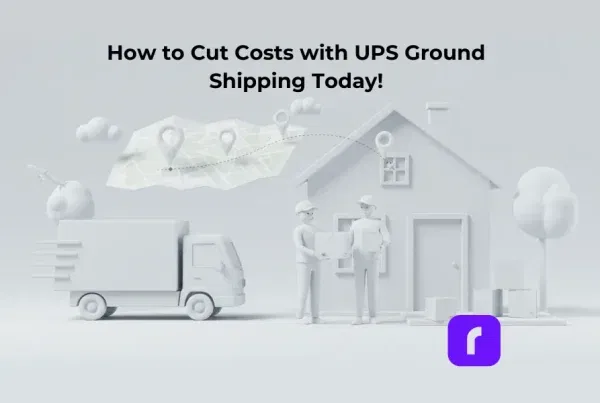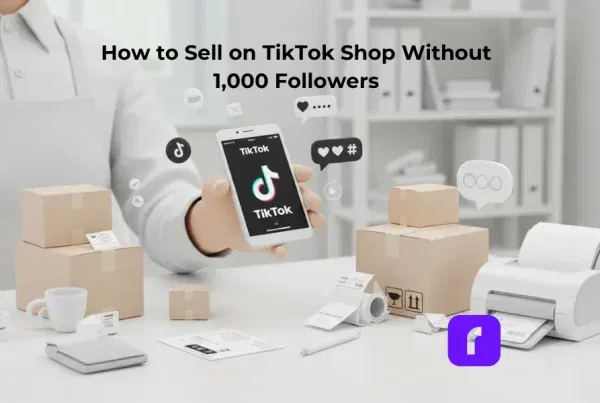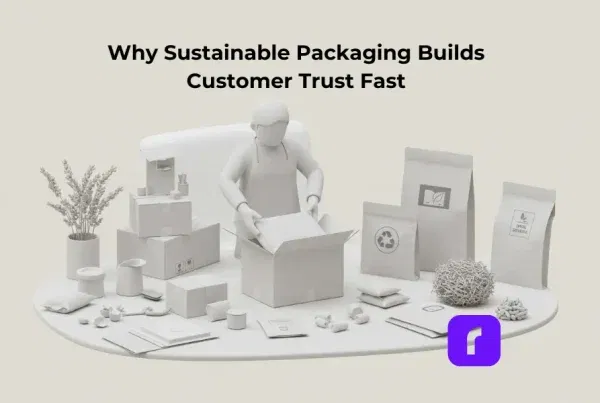Online sellers and small business owners know how tricky it can be to pick the right shipping carrier. One minute you’re comparing FedEx vs UPS for shipping costs, and the next, you’re squinting at extra fuel surcharges or new weekend delivery options. If you’re tired of the guesswork, you’re not alone. This post will walk you through the biggest moves FedEx and UPS are making as we head toward 2025, so you can figure out which service best suits your business (and your sanity).
Below, we’ll tackle everything from shipping rates comparison to environmental sustainability initiatives to give you a complete picture. We’ll also explain how tools like Rollo Ship and the Rollo Wireless Label Printer can make your shipping life easier. And if you’ve ever wondered how to save time, money, and stress on logistics, keep reading. We’ve got you covered.
Key Takeaways
A Quick Peek at FedEx vs UPS in 2025
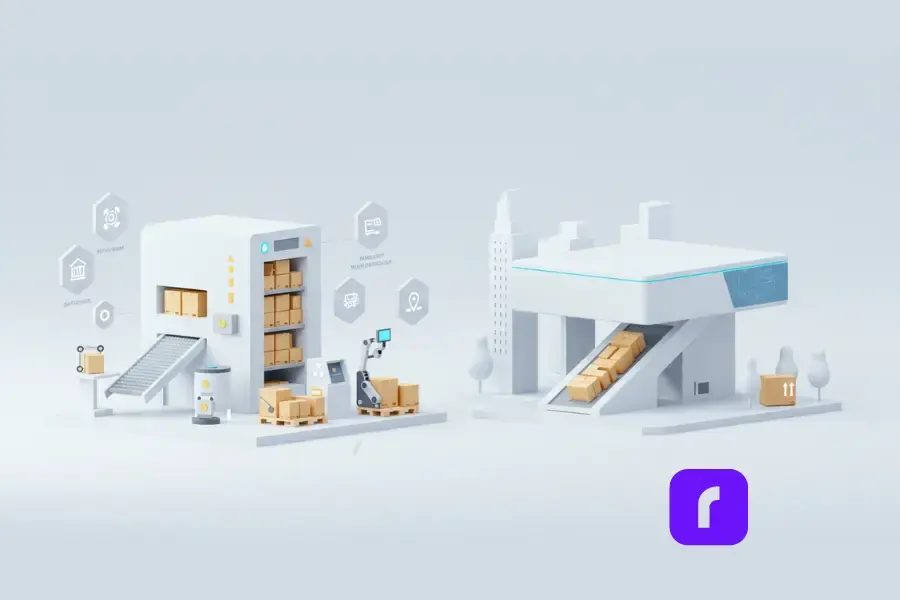
It seemed like 2025 was far off, but now it’s here—and it arrived faster than we ever expected. FedEx vs UPS — two of the biggest shipping carriers in the game — are making substantial changes to adapt to shifting consumer demands, hyperlocal delivery expectations, and greener shipping solutions. Recent expansions include:
- 🤖 FedEx partnering with Nimble, an AI robotics and autonomous technology company, to bolster e-commerce fulfillment through robot-run micro-fulfillment centers. According to FedEx’s strategic investment announcements, these centers can reduce warehouse space by 75% and speed up picking, packing, and shipping processes.
- 📦 UPS rolling out a new Hyperlocal delivery service to capture more profitable B2B and B2C volume for next-day (and possibly even same-day) shipments in metropolitan areas.
The biggest question is: Which shipping giant will better serve online sellers in 2025? Let’s break down the main points, so you can decide for yourself.
Simplify Your Shipping with Rollo
Shipping Rates and Speed
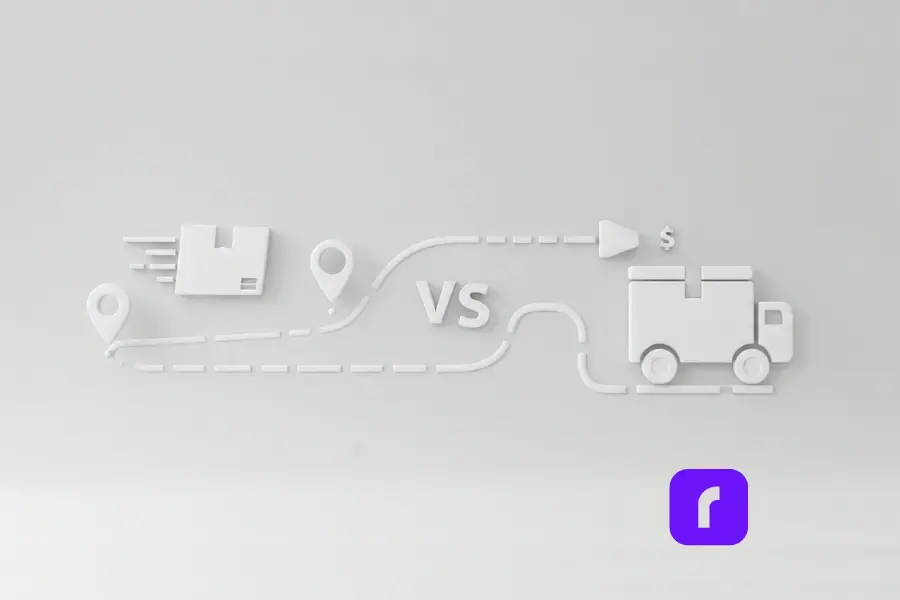
Shipping Rates Comparison
Talking about shipping rates comparison means diving into both base prices and hidden fees. Usually, FedEx is known for competitive pricing on time-sensitive shipments, especially lighter parcels that need to get from point A to point B in a hurry. UPS, on the other hand, can often be cheaper for heavier shipments — particularly if you can afford a slightly slower transit time.
Sample FedEx vs UPS Rates
Rates vary by location, weight, and service type. Here’s a simplified table to give you a snapshot of how costs might shake out in 2025. (Note: these are ballpark figures for illustrative purposes, not actual published rates. Always check your carrier’s site for up-to-date info.)
| Service & Weight | FedEx (Approx.) | UPS (Approx.) | Ideal For |
|---|---|---|---|
| Light (under 2 lbs), Overnight | $25 – $35 | $27 – $40 | Time-sensitive shipments that must arrive the next day |
| Light (under 2 lbs), 2-Day | $18 – $22 | $19 – $25 | Slightly urgent packages with a bit of leeway |
| Heavy (10 lbs+), 3-Day | $30 – $50 | $28 – $45 | Larger items that don’t require immediate delivery |
| Ground (under 5 lbs), 3-5 days | $10 – $15 | $9 – $14 | Economical shipping for routine parcels without urgency |
While the actual numbers will shift, the pattern remains: FedEx often shines for speed (overnight or two-day) and smaller packages, while UPS can give you better value on heavier items if you don’t mind an extra day or two in transit.
Cost-Saving Tip: If you’re shipping a mix of different package sizes, you might end up splitting shipments between the two carriers to minimize shipping carrier costs. Rollo Ship lets you compare real-time rates from both FedEx and UPS, so you can pick the cheapest option for each order without juggling spreadsheets.
Delivery Speed
When it comes to delivery speed, both FedEx and UPS have been stepping up their game. Online shoppers want their items faster than ever, whether it’s overnight or even within a few hours for local deliveries. Looking ahead to 2025, we’ll likely see these developments:
- 🚀 FedEx has been growing its range of express services and pushing the boundaries of same-day or next-day shipping, especially in urban areas where distribution centers are closer to final destinations.
- 🏙️ UPS launched its Hyperlocal service to keep up with this demand, promising next-day or possibly same-day deliveries for metropolitan zip codes.
For time-sensitive shipments (think perishable goods, urgent medical supplies, or that last-minute birthday present), FedEx is historically known for meeting tight delivery windows. Meanwhile, UPS’s expansions indicate it doesn’t want to be outpaced. Expect stiff competition in the local (hyperlocal) delivery space as 2025 draws near.
Print Your Shipping Labels Faster
International Shipping Options
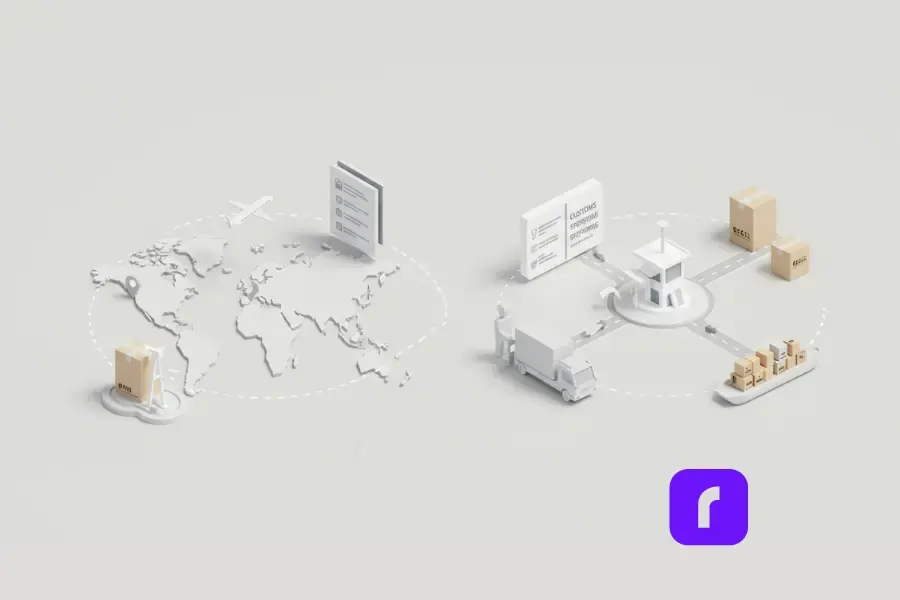
If you’re shipping internationally, you might already be juggling complicated paperwork, customs forms, and various fees. International shipping options from FedEx and UPS are robust, though each carrier has areas where it especially shines:
- ✈️ FedEx has FedEx International Priority and multiple tiered services for quick or cost-effective delivery across borders. FedEx invests heavily in global air express freight, especially for time-sensitive shipments that cross oceans.
- 📦 UPS offers a wide range of global shipping services through the United Parcel Service brand, often referred to as “brown” by e-commerce pros. It’s recognized for strong customs brokerage solutions and fairly seamless cross-border shipping processes, particularly for heavier or higher-volume shipments.
Both carriers are adopting micro-fulfillment centers near major international airports. FedEx’s strategic partnership with Nimble is expected to reduce transit times for international shipments, since items can be picked, packed, and shipped out quickly. UPS’s established global network remains a key player, especially for B2B shipping across continents.
Pro Tip: If you regularly ship globally, factor in customs, duties, and packaging requirements. Using a shipping app like Rollo Ship can centralize your shipping details, so you can automatically populate customs forms and pick whichever carrier is cheaper or faster for a given country.
Ground Shipping Services
For less time-sensitive shipments, ground shipping services can save you money. FedEx Ground and UPS Ground are often the default choices for many online sellers:
- 📦 FedEx Ground boasts reliable door-to-door ground service across the U.S., typically offering delivery within 1–5 business days, depending on distance. It’s especially handy for e-commerce sellers wanting to manage shipping costs on domestic and international shipments that don’t need lightning-fast speed.
- 📦 UPS Ground is well-known for cost-effective shipping, especially if your parcels weigh more than a couple of pounds. UPS invests heavily in a network of distribution hubs, allowing them to maintain consistent ground shipping times.
Looking ahead, both FedEx Ground and UPS Ground will likely incorporate more advanced automation. We’re already seeing FedEx invest in warehouse robotics, and UPS is expanding the concept of “personal vehicle drivers” to speed last-mile deliveries. That means ground shipping could get even more reliable and possibly faster, though it’ll still lag behind guaranteed overnight or two-day services.
Ship Smarter with Rollo
Express Delivery
The phrase “express delivery” covers overnight, two-day, or any guaranteed fast option. FedEx has built its reputation on speed, with services like FedEx Priority Overnight, FedEx Standard Overnight, and FedEx 2Day. UPS counters with Next Day Air, 2nd Day Air, and 3 Day Select. Both carriers provide:
- 📍 Tracking updates (more on package tracking soon).
- 📝 Signature confirmation options.
- ⏳ Multiple drop-off times, including late cutoffs in some regions.
By 2025, expect these express services to get even more specialized, with carriers offering:
- 🏙️ Same-day local or hyperlocal express (particularly in dense urban areas).
- ⏰ Customized windows for B2B or B2C deliveries (like guaranteed 10 a.m. or 5 p.m. arrivals).
- 🌱 Green express shipping options to meet environmental goals.
Overnight Delivery Options
Overnight delivery options are crucial for time-sensitive shipments, and they’re also a competitive differentiator. When your store promises “Next-Day Shipping,” you’d better have a carrier who can back that up.
- 📦 FedEx typically offers Saturday delivery for express shipments and has expanded Sunday residential delivery in many U.S. markets.
- 🚚 UPS has advanced Saturday pickup and delivery in some regions, plus the possibility of Sunday deliveries through partnerships (though it’s not as common as FedEx’s Sunday coverage).
Both carriers will likely continue refining these overnight shipping services in 2025, possibly rolling out even later drop-off times for next-day arrival or earlier guaranteed windows. If you’re shipping internationally, you can also find “overnight” or next-business-day deliveries to certain key global hubs — though that’s typically more expensive than domestic overnight shipping.
Money-Saving Note: If you’re shipping smaller overnight packages, FedEx might be cheaper. If you’re shipping heavier items or want a guaranteed early-morning arrival, UPS Next Day Air might edge out FedEx on pricing. Always compare. Tools like Rollo Ship let you do that quickly.
Weekend Delivery Options
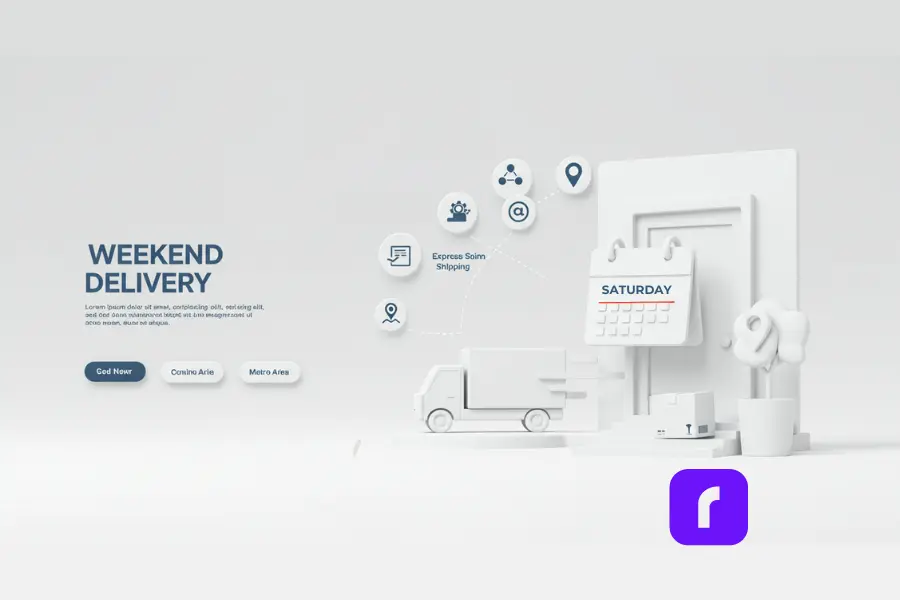
Weekend delivery options are increasingly important. Customers want their packages ASAP, and that includes Saturdays or even Sundays:
- 📦 FedEx typically offers Saturday delivery for express shipments and has expanded Sunday residential delivery in many U.S. markets.
- 🚚 UPS has advanced Saturday pickup and delivery in some regions, plus the possibility of Sunday deliveries through partnerships (though it’s not as common as FedEx’s Sunday coverage).
By 2025, we can expect more weekend coverage from both carriers, especially in metro areas. That means if your business sells time-sensitive products (like fresh meal kits or event tickets), you can keep the momentum going over the weekend without losing days. Just remember to factor in higher fees for these weekend services.
Additional Fees & Discounts
Business Shipping Discounts
Who doesn’t love a good discount? Business shipping discounts can make or break your bottom line, especially if you’re pumping out orders daily. Both FedEx and UPS offer:
- 📈 Volume-based pricing, where your rates improve as your shipping volume climbs.
- 🏥 Special deals for certain industries (e.g., healthcare, education, e-commerce).
- 🎁 Regular promotions around holidays or specific shipping services.
If you’re a small or medium-sized business, you might worry you’re too tiny to qualify. The good news is you can still save. Tools like Rollo Ship can unlock discounted shipping rates even if you don’t have enterprise-level volume. It connects your existing carrier account (UPS or FedEx) and applies discounted rates that might otherwise be tough to negotiate on your own.
FYI: Many retailers have pivoted away from “paying retail prices” for shipments. Negotiating or using a shipping tool can be a game changer.
Fuel Surcharges
Fuel surcharges are the wild card in your shipping bill. Carriers often tie these fees to fluctuating oil prices, meaning you can see your cost spike when fuel costs are high. FedEx and UPS both update their surcharges weekly or monthly, referencing an index based on average diesel or jet fuel prices.
While a few cents might not seem like a big deal, if you’re shipping thousands of packages annually, it adds up. By 2025, we might see carriers experiment with greener fleets (electric vehicles, alternative fuels), potentially stabilizing or reducing these surcharges. But don’t expect them to vanish entirely.
Strategy Tip: Keep an eye on the carriers’ fuel surcharge calculators. Knowing when prices tend to rise can help you plan big shipping promotions or major product launches around the lowest possible surcharges, saving a decent chunk of money.
Residential Delivery Fees
Almost half of all e-commerce shipments go to homes. Residential delivery fees from FedEx or UPS are tacked on whenever a package isn’t going to a business address:
- 🏠 FedEx calls this Residential Surcharge.
- 🚛 UPS does the same, applying additional fees for deliveries outside commercial zones.
Expect these fees to keep climbing as more folks shop online. UPS’s new hyperlocal focus might eventually reduce some of these fees in dense areas, but that’s still in flux. If your audience is mostly individuals rather than businesses, build residential surcharges into your shipping cost strategy or consider rolling them into the product price to avoid sticker shock at checkout.
Pro Tip: Sometimes a business address is cheaper to ship to, so if your buyer can accept deliveries at their workplace, they can save money. You can also highlight a store pick-up option if it’s available (e.g., shipping to a UPS Store or FedEx Office location).
Pickup Services
When you’re drowning in orders, dropping off packages at the carrier’s location is a chore. Pickup services can be a lifesaver. FedEx and UPS offer scheduled pickups at your home or warehouse:
- 📦 FedEx often charges a small fee for on-demand or scheduled pickups unless you have a high-volume account.
- 🚚 UPS has various pickup options, including same-day or next-day pickups, with fees depending on your volume and service level.
By 2025, these fees might change as carriers automate local pickups or use gig drivers. UPS’s acquisition of Roadie suggests we may see more flexible, on-demand pickups beyond standard business hours. FedEx similarly allows its contractors to hire alternative vehicle drivers for local pickups and deliveries, so that might expand your scheduling options.
Weigh Packages Accurately & Avoid Extra Fees
Oversized Package Handling
Selling anything bulky or oddly shaped? Oversized package handling can get pricey. FedEx and UPS both charge extra for:
- 📏Dimensions that exceed standard length or girth.
- 📦 Extra large or irregularly shaped items.
- ⚖️ Weight beyond certain thresholds.
FedEx Ground and UPS Ground each have max weight and dimension limits. If you exceed them, you’ll be hit with hefty surcharges (sometimes called “additional handling” or “large package” fees). With e-commerce continuing to expand into furniture, exercise equipment, and big electronics, expect carriers to refine (and possibly increase) these surcharges by 2025.
Carriers might also focus on advanced packaging technology or partnering with specialized freight services for extremely large items. If your business deals in big or heavy shipments, factor that into your cost projections — and maybe build it into your product pricing to avoid taking a hit on shipping.
Reliability, Tracking & Customer Satisfaction

Reliable On-Time Delivery
Reliability and on-time delivery ratings are make-or-break for e-commerce sellers. Missed or late deliveries mean unhappy customers and potential negative reviews. Historically:
- ⏳ FedEx has a strong track record for overnight and time-sensitive shipments, often outperforming competitors in delivering on time.
- 🌍 UPS is praised for consistent ground and international deliveries, handling heavier shipments with fewer delays.
Still, no one is immune to weather disruptions, strikes, or supply chain crunches. In 2025, both carriers are tackling reliability with better route optimization software, advanced sorting facilities, and strategic labor partnerships (like UPS tapping gig workers through Roadie or FedEx allowing contractors to hire alternative vehicle drivers).
Keep an eye on local or national news about labor negotiations and capacity constraints. If you’re shipping hundreds of packages a day, even a small glitch in reliability can set you back. Having accounts with both carriers can help you pivot quickly if one experiences an outage or slowdown.
Package Tracking
Package tracking is crucial if you’re trying to cut down on “Where’s my order?” emails. Both FedEx and UPS have robust systems that update customers whenever a package changes hands. Over the last few years, we’ve seen improvements like:
- 🔄 FedEx Delivery Manager, which lets customers reroute or reschedule deliveries on the fly.
- 📲 UPS My Choice, providing real-time notifications and allowing address changes or hold-for-pickup options.
By 2025, these might become even more interactive. Imagine a scenario where your buyer can use an app to message the driver or request a more environmentally friendly delivery slot.
As consumer expectations rise, the carriers will respond with deeper tracking insights and interactive communication tools.
Insider Tip: If you’re shipping from multiple carriers, it’s a huge hassle to track everything on separate dashboards. Tools like Rollo Ship integrate FedEx and UPS into one interface, so you can handle labels, tracking, and delivery updates from a single platform.
Customer Satisfaction Ratings
FedEx and UPS regularly top the charts for customer satisfaction ratings in the major shipping carriers category. External surveys (like those from J.D. Power and consumer watchdog groups) often place them neck and neck, with minimal differences in overall satisfaction.
Where they differ is often in:
- 📑 Claims resolution for lost or damaged packages.
- ☎️ Ease of contacting customer service (phone vs. chat vs. email).
- 💰 Fee transparency (some find FedEx surcharges more unpredictable; others complain about UPS’s extra fees).
By 2025, we’ll likely see carriers investing more in user-friendly mobile apps and automation to handle claims quickly. After all, nobody wants to waste hours chasing a lost box. FedEx’s approach might involve advanced robotics for sorting and scanning, while UPS might expand its local footprint to reduce miles traveled (and thus reduce lost-in-transit issues).
Shipping Insurance

No matter how reliable a carrier is, accidents happen. That’s why shipping insurance is a must, especially for high-value goods. FedEx and UPS both provide default coverage for packages up to a certain declared value. You can also purchase additional insurance if you’re shipping pricey items like electronics or jewelry.
FedEx typically includes coverage for the first $100 in value. UPS does the same. Above that, you pay extra for declared value coverage. Third-party insurance providers may be cheaper if you ship a large number of high-value goods. By 2025, we might see simpler, more automated insurance processes, like instant coverage via AI-based risk assessment tools. If you do a lot of insurable shipments, keep an eye on these developments, as they could save you considerable money and headache.
Small Business & B2B Solutions
Small Business Shipping Solutions
Small and medium-sized businesses often wear multiple hats, so small business shipping solutions matter. Both carriers have portals tailored for SMBs:
- 🛠️ FedEx runs a business program with shipping tools, some marketing perks, and flexible invoice options.
- 💼 UPS has a My UPS account offering shipping tools, discounted rates, and in-store drop-off/pickup at many locations.
Beyond the carriers themselves, you’ll find solutions like Rollo Ship, which connects your existing carrier account to a single dashboard, so you can:
- Print labels from a Rollo wireless label printer quickly.
- Compare FedEx and UPS shipping rates on the spot.
- Batch-print shipping labels for dozens (or hundreds) of orders in minutes.
For busy entrepreneurs shipping everything from books to handcrafted candles, these streamlined tools can be a lifesaver. By 2025, expect even more frictionless shipping solutions as competition in e-commerce technology heats up.
B2B vs B2C Shipping Options
Finally, there’s a difference between B2B vs B2C shipping options. If your primary customers are other businesses, you might prefer a carrier that specializes in commercial routes and early morning deliveries (when offices are open). If you’re mostly shipping to consumers, residential surcharges and weekend delivery come into play.
- 🚚 FedEx has robust B2B solutions, especially for urgent shipments. FedEx Office locations also serve as drop-off and pickup points.
- 🌍 UPS is known for consistent B2B coverage worldwide, with a strong network of distribution centers for heavier or palletized shipments.
By 2025, the line between B2B and B2C might blur, as more businesses pivot toward e-commerce. However, we’ll still see specialized services for B2B, like guaranteed arrival during business hours or advanced freight handling for large orders.
Helpful Note: If you ship to both business and residential addresses, Rollo Ship can help you toggle between the two carriers for the best rates on a shipment-by-shipment basis, ensuring you’re not paying more than you need for B2B or B2C.
FedEx vs UPS: Technology & Sustainability
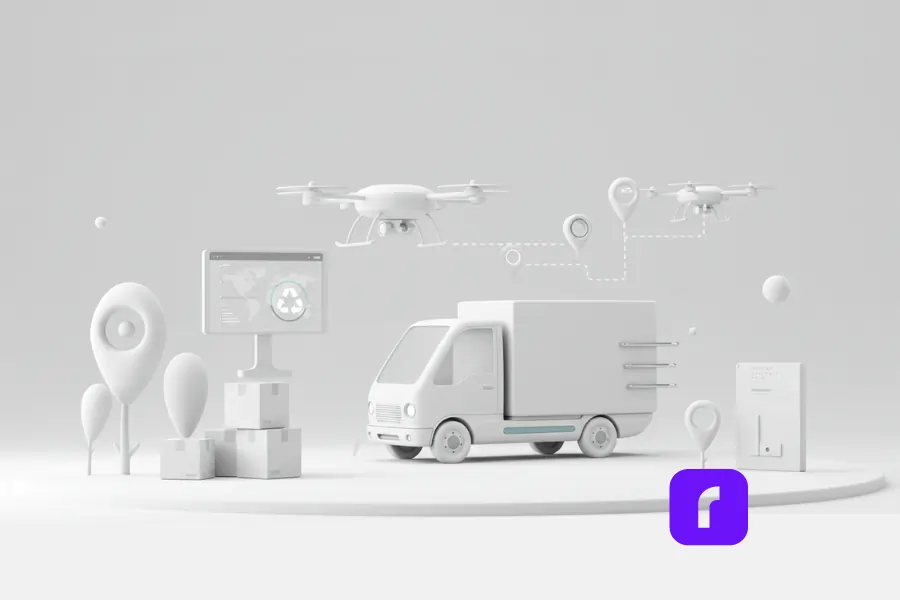
Shipping Technology and Innovations
Both FedEx and UPS are investing heavily in shipping technology and innovations, aiming to speed up deliveries, reduce errors, and stay competitive in the age of hyperlocal demands:
- 🏙️ FedEx teamed up with Nimble to use robot-run fulfillment centers, cut warehouse space needs, and accelerate shipping internationally.
- 🚚 UPS launched a Hyperlocal service for next-day or same-day deliveries in dense city areas, leveraging existing facilities and new distribution models.
Expect expansions in:
- 🚗 AI-driven route optimization (so drivers take the most efficient path).
- 📊 Predictive analytics (guessing how many trucks or drivers are needed per day).
- 🤖 Autonomous deliveries (drones or robotic vehicles in certain test markets).
This arms race in shipping technology benefits small businesses because improved efficiency often leads to more competitive rates, better reliability, and faster delivery. Though, of course, not every savings is passed on to the consumer. Still, the possibility of advanced tracking and more dynamic deliveries is on the horizon.
Environmental Sustainability Initiatives
Eco-conscious customers pay attention to environmental sustainability initiatives. By 2025, you can bet both carriers will ramp up:
- 🚛💚 Green fleets: electric or hybrid vehicles for local delivery.
- 🌍 Carbon offsets: letting businesses or shoppers neutralize their shipping emissions.
- 📄✨ Paperless workflows: digital receipts, automatically generated shipping labels, and minimal paper usage.
FedEx’s partnership with robotic fulfillment centers indirectly helps reduce energy consumption. Meanwhile, UPS is testing alternative fuel delivery trucks, plus streamlined supply chain management to shorten routes. If your brand identity hinges on sustainability, look for carriers that let you highlight or offset carbon footprints at checkout.
Pro Tip: Some shipping label printers, like the Rollo Wireless Label Printer, also reduce paper waste by using thermal technology — no ink or toner is required. Small steps add up when you’re shipping hundreds of labels daily.
Looking Beyond 2025
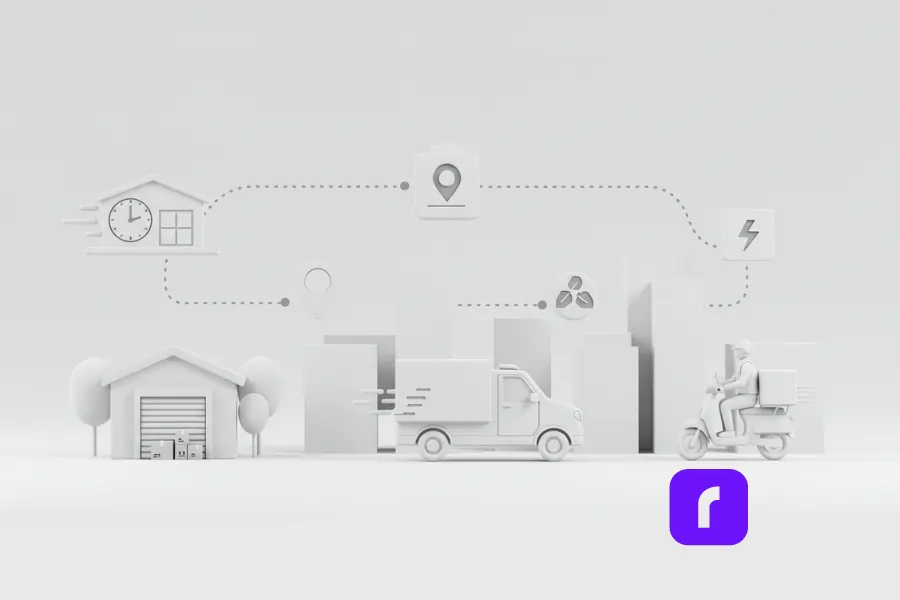
Beyond these categories, it’s worth touching on a few broader trends that will shape FedEx vs UPS competition:
- Hyperlocal Delivery
- UPS: The new Hyperlocal service is all about next-day or even same-day service in certain metropolitan areas. This might heavily impact smaller e-commerce sellers in major cities, letting them promise ultra-fast shipping to local customers.
- FedEx: Its partnership with Nimble extends to micro-fulfillment centers, meaning FedEx might reduce shipping times by physically locating products closer to customers.
- Gig-Economy Partnerships
- UPS: Has already acquired Roadie, employing part-time or on-demand drivers.
- FedEx: Not a direct partner with gig platforms, but FedEx Ground allows contractors to hire drivers with personal vehicles.
- Sustainability and Urban Zoning
- High-density areas are implementing stricter zoning laws to reduce congestion and emissions. Expect FedEx and UPS to adopt more electric vehicles and possibly partner with local warehousing solutions to minimize traffic.
These factors will continue to evolve, so staying up to date could give you a leg up on your competition.
Rollo’s Fit in the FedEx vs UPS Puzzle
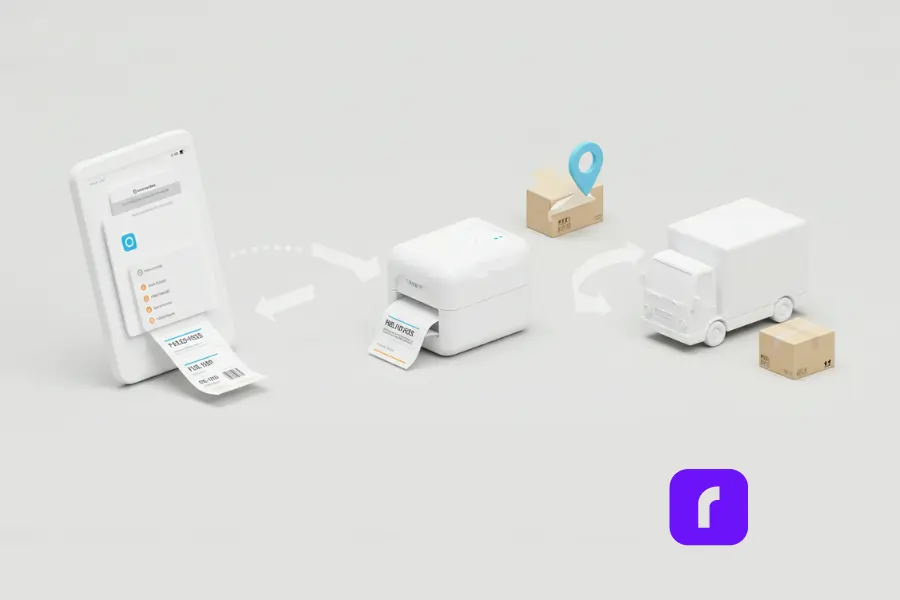
If you’re running an online store, you’re probably juggling tasks from product sourcing to social media marketing. The last thing you need is a shipping headache. That’s where Rollo steps in:
- 🖨️⚡ Rollo Wireless Label Printer: Prints labels fast, with no ink or toner needed. It’s super easy to integrate with your computer or shipping software, and it helps you avoid those classic printer jams.
- 📦🚀 Rollo Ship: A shipping app that connects your existing UPS or FedEx account, so you can compare rates, print labels, track packages, and even get discounted shipping rates — all from one dashboard.
This means you can seamlessly toggle between FedEx for, say, that quick overnight shipment, and UPS for your heavier ground packages, without opening multiple tabs or applications. It consolidates your shipping data, making it less likely you’ll mess up an address or ship out a package late.
If your business is shipping books, educational materials, or anything else that needs a single, straightforward solution, Rollo Ship is a serious time-saver. No more copy-pasting details into different portals or negotiating separate deals for each carrier. You can test it yourself and see if it makes shipping less of a chore.
Final Words
There’s no universal winner in the FedEx vs. UPS debate—both are pushing innovation, expanding micro-fulfillment, and investing in hyperlocal and gig-driven solutions. In 2025:
- 🚀 FedEx may be ideal for faster, smaller deliveries, leveraging Nimble’s robot-run warehouses to cut transit times.
- 🌍 UPS could dominate heavier, global shipments, with its Hyperlocal service streamlining next-day B2C and B2B deliveries in major cities.
Ultimately, your choice depends on what you’re shipping, where it’s going, and how fast it needs to arrive. Customers care about speed, cost, and reliability—not which carrier’s logo is on the box.
With tools like Rollo, you can compare FedEx and UPS rates in real-time to ensure each shipment goes out on the best service at the best price. If you’re an online seller looking to grow in 2025, start testing new shipping options now—because in an era where Amazon sets the standard, efficiency and affordability are the keys to staying competitive.
Disclaimer: Any shipping rate examples or timelines here are approximations for illustrative purposes and are not official carrier quotes. Always consult the respective carrier websites or your shipping solutions provider for the most accurate, up-to-date information.
Follow Rollo on:
Frequently Asked Questions About FedEx vs UPS
📌 Q: Which carrier is better for small businesses, FedEx or UPS?
💭 A: Both FedEx and UPS offer competitive shipping solutions for small businesses. FedEx is ideal for time-sensitive, lightweight shipments, while UPS often provides better rates for heavier packages and reliable ground shipping. Many businesses use both carriers strategically to optimize costs and delivery speed.
📌 Q: Does FedEx or UPS deliver on Sundays?
💭 A: FedEx offers Sunday residential deliveries for most U.S. locations, making it a strong option for weekend shipping. UPS primarily delivers on Saturdays, but some regions have Sunday deliveries through third-party partnerships.
📌 Q: Which carrier has the best tracking system: FedEx or UPS?
💭 A: Both carriers have robust tracking systems. FedEx Delivery Manager allows customers to reroute or reschedule deliveries, while UPS My Choice offers real-time tracking and delivery customization. UPS generally provides more precise time windows for delivery, while FedEx shines in real-time updates.
📌 Q: Is UPS or FedEx better for international shipping?
💭 A: FedEx is known for its fast, express international shipping, especially for urgent, air-based shipments. UPS offers strong customs brokerage services and is often more cost-effective for heavier, international shipments. If customs processing is a concern, UPS may have a slight advantage.
📌 Q: Which carrier offers better bulk shipping discounts?
💭 A: Both FedEx and UPS offer volume-based pricing discounts for businesses shipping high quantities. If you don’t qualify for volume discounts, you can access negotiated rates through platforms like Rollo Ship, which helps small businesses unlock lower rates.
📌 Q: Which is better for overnight shipping: FedEx or UPS?
💭 A: FedEx Priority Overnight is known for its morning delivery options and reliability. UPS Next Day Air offers multiple tiers, including Early AM delivery for ultra-urgent shipments. Compare pricing and delivery windows based on your specific needs.
